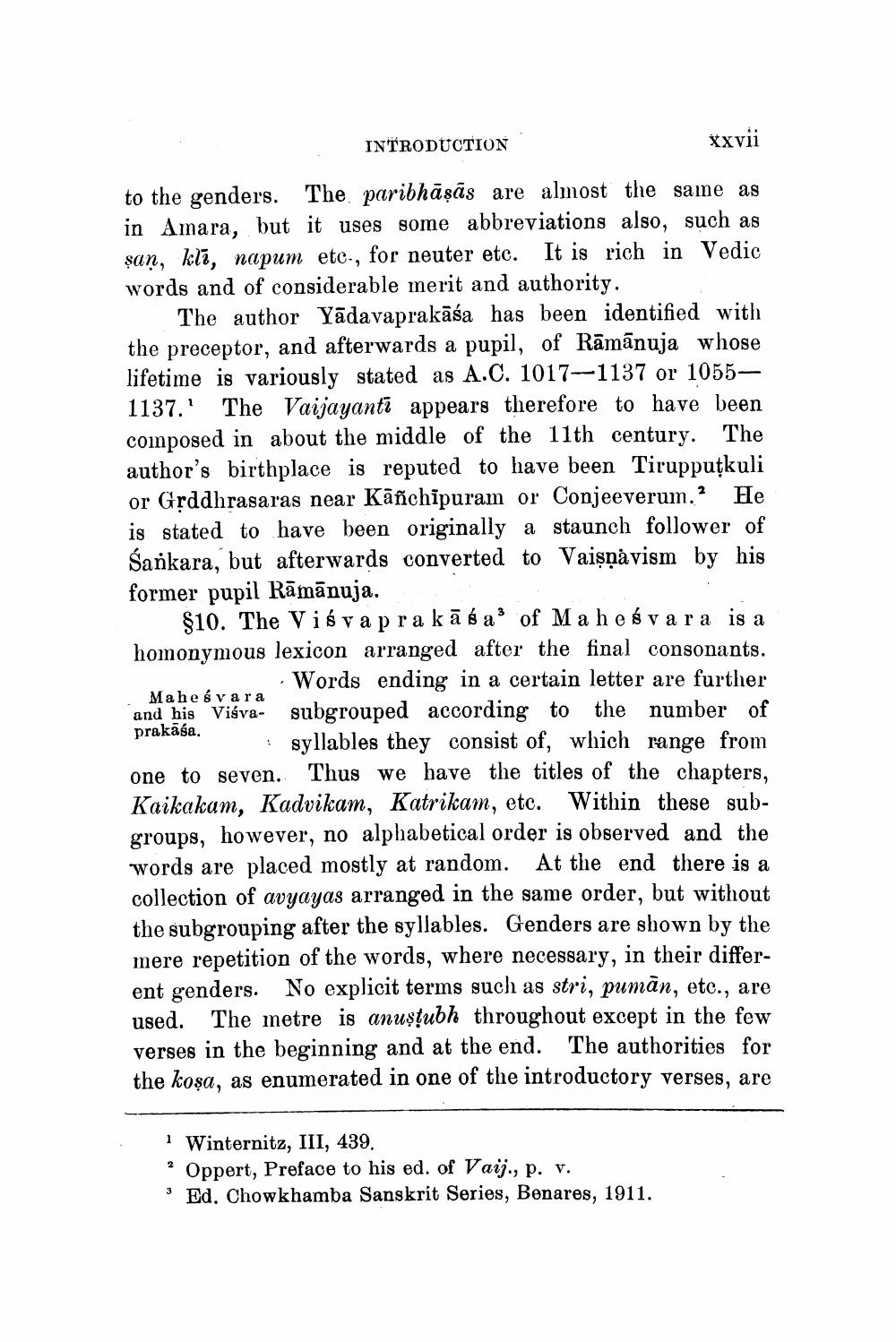________________
INTRODUCTION
xxvii to the genders. The paribhāṣās are almost the same as in Amara, but it uses some abbreviations also, such as şan, klī, napum etc., for neuter etc. It is rich in Vedic words and of considerable merit and authority.
The author Yādavaprakāśa has been identified with the preceptor, and afterwards a pupil, of Rāmānuja whose lifetime is variously stated as A.C. 1017--1137 or 1055– 1137.' The Vaijayantī appears therefore to have been coinposed in about the middle of the 11th century. The author's birthplace is reputed to have been Tirupputkuli or Gțddhrasaras near Kāñchipuram or Conjeeverum.? He is stated to have been originally a staunch follower of Śankara, but afterwards converted to Vaişəåvism by his former pupil Rāmānuja.
$10. The Viśv a pra kā s as of Ma h es va ra is a homonymous lexicon arranged after the final consonants.
Words ending in a certain letter are further Mahes vara and his Viśva- subgrouped according to the number of prakāśa.
syllables they consist of, which range from one to seven. Thus we have the titles of the chapters, Kaikakam, Kadvikam, Katrikam, etc. Within these subgroups, however, no alphabetical order is observed and the words are placed mostly at random. At the end there is a collection of avyayas arranged in the same order, but without the subgrouping after the syllables. Genders are shown by the mere repetition of the words, where necessary, in their different genders. No explicit terms such as stri, pumān, etc., are used. The metre is anuştubh throughout except in the few verses in the beginning and at the end. The authorities for the koşa, as enumerated in one of the introductory verses, are
1 Winternitz, III, 439. ? Oppert, Preface to his ed. of Vaij., p. v. 3 Ed. Chowkhamba Sanskrit Series, Benares, 1911.




